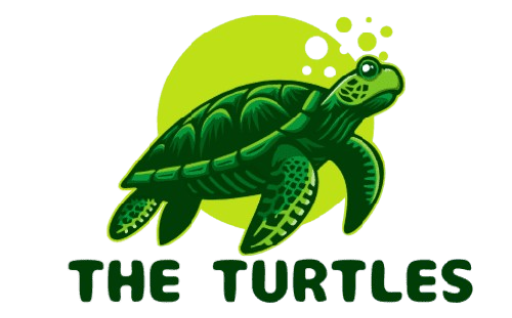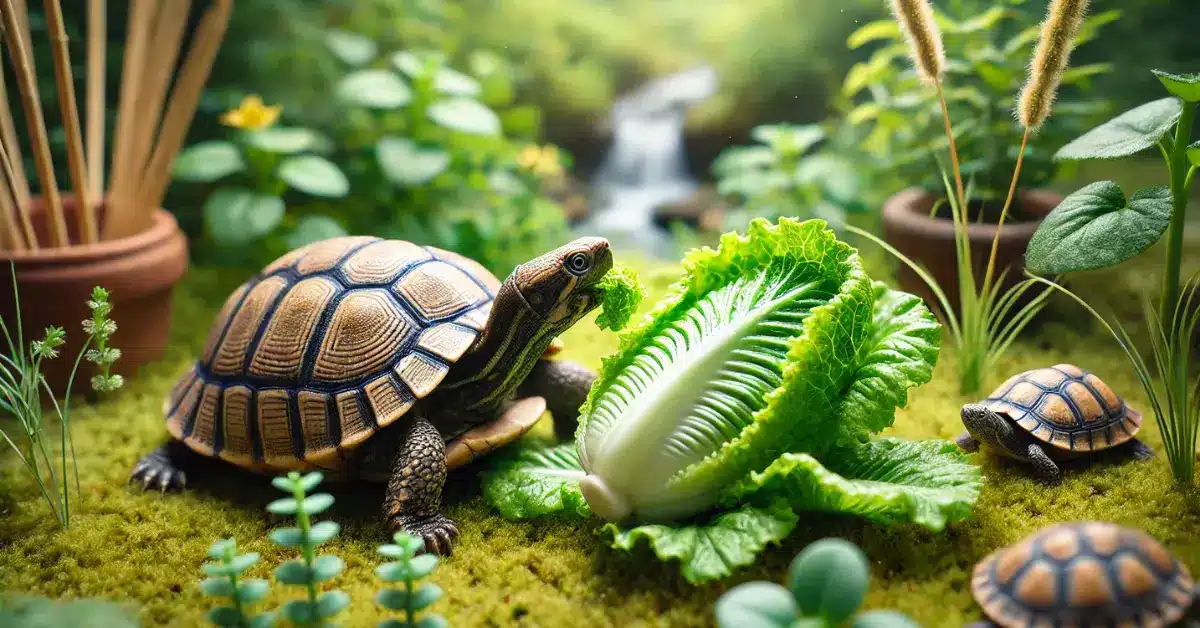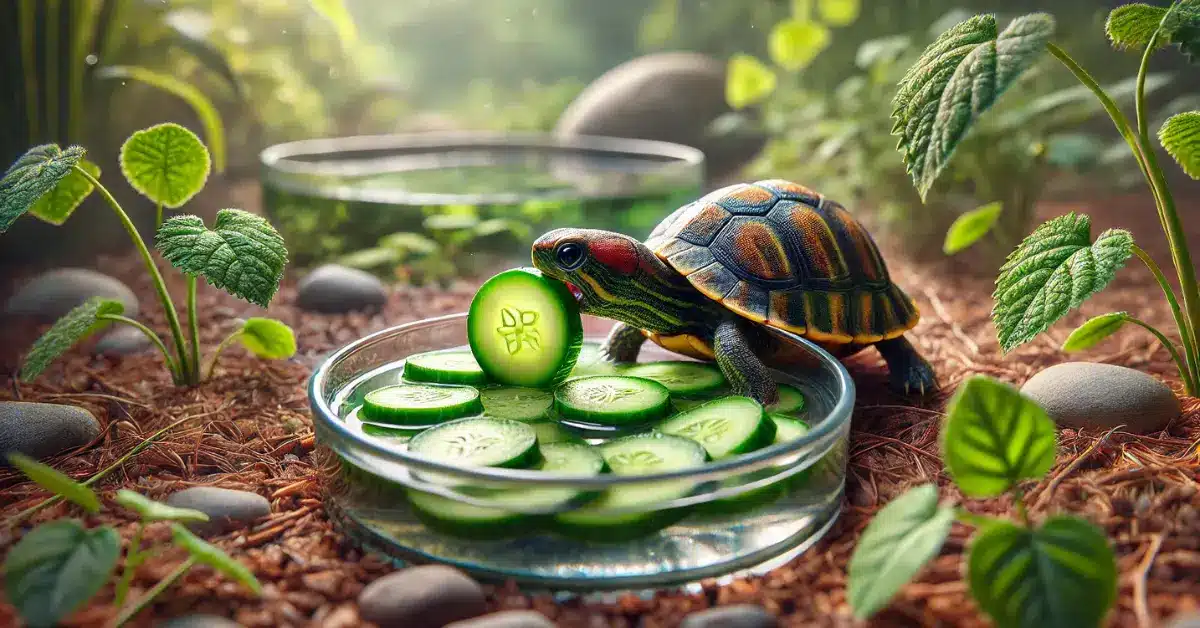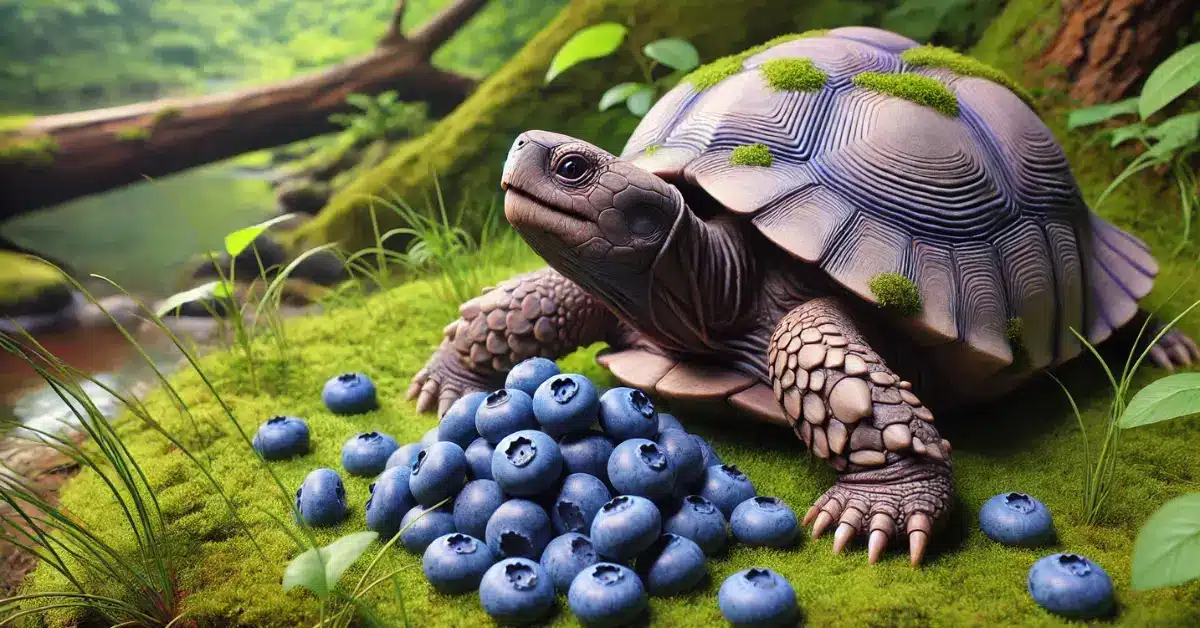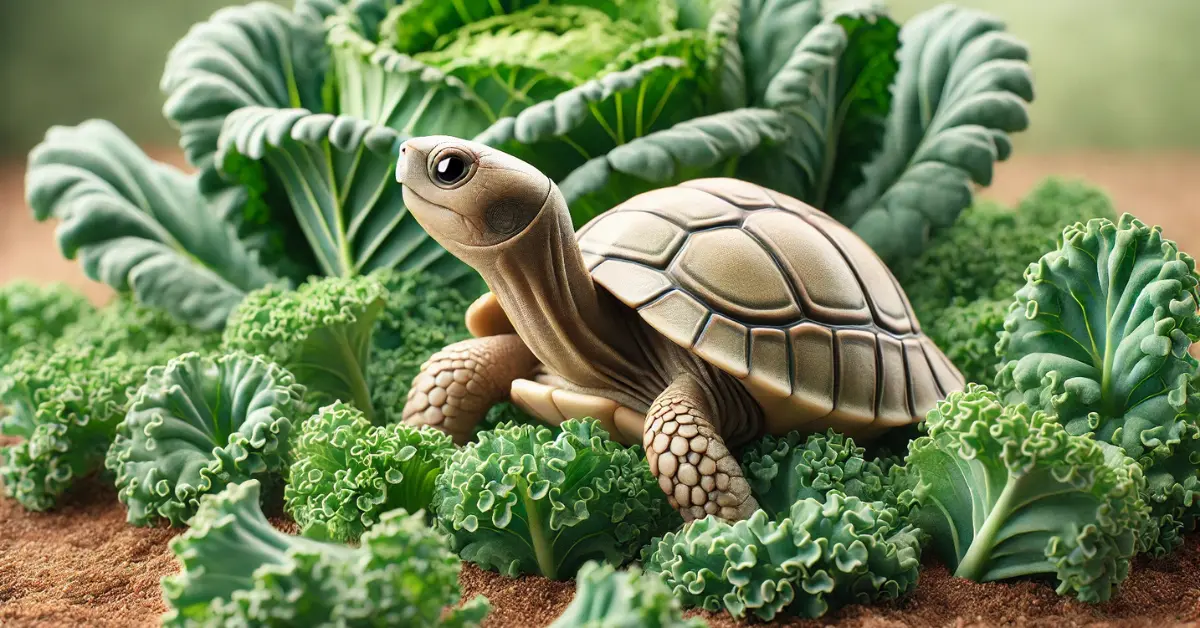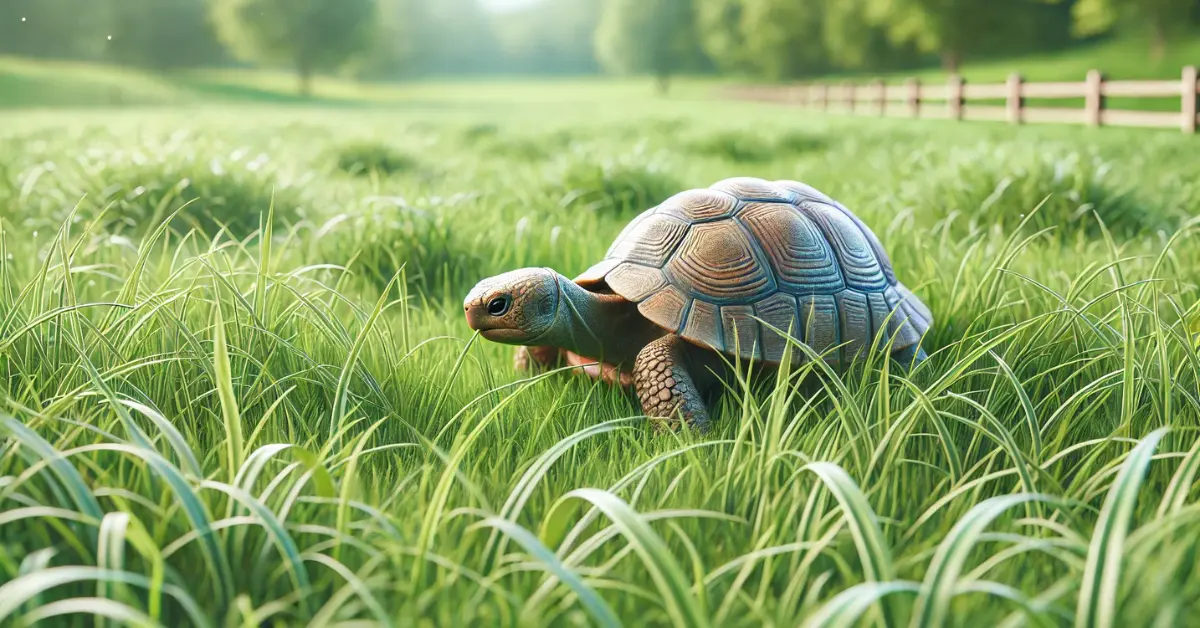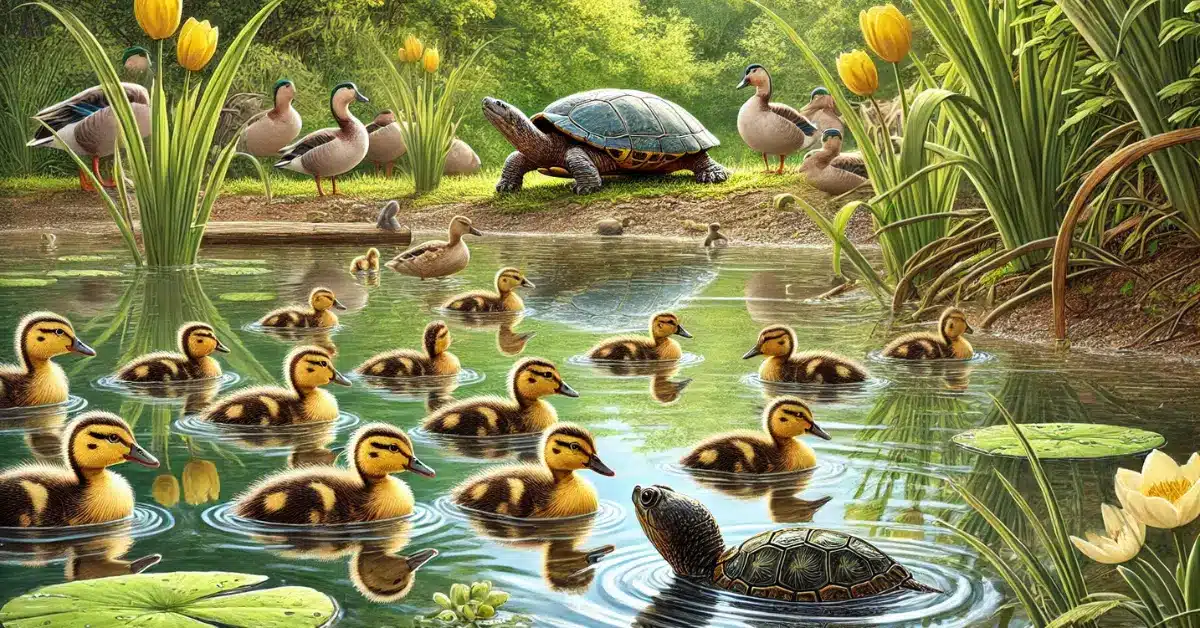Welcome to Theturtles.info! Here, we dive into the exciting world of What Do Turtles Eat. From deep oceans to dry deserts, turtles eat many different things depending on where they live. Join us as we explore the different foods turtles enjoy and learn how we can help keep them healthy and safe.
Table of Contents
ToggleThe Amazing World of Turtle Diets
Turtles aren’t picky eaters at all. They enjoy a variety of foods from plants to small bugs. What they eat helps them survive in their natural homes. By learning about their diets, we can see how they fit into their environment and how they’ve managed to live for so many years.
Diversity of Turtle Species and Their Eating Habits
There are many types of turtles, and each type has its own favorite foods. For example, turtles that live in water, like the Red-Eared Slider, eat both plants and animals such as algae and tiny fish. On the other hand, turtles that live on land, like the Desert Tortoise, mostly eat grass and sometimes fruit.
The different kinds of foods they eat help them live well in various places. Water turtles have flat, smooth shells that help them swim and dive for food, while land turtles have rounded shells that protect them from animals that might want to eat them.
Importance of Proper Nutrition for Turtle Health
Eating the right foods is very important for a turtle’s health. Each kind of turtle needs certain nutrients to stay healthy. Water turtles need more protein because they are very active, but land turtles need lots of fiber to help them digest their food.
If you have a pet turtle, it’s important to feed them like they would eat in the wild. This means giving them a good mix of vegetables, proteins, and vitamins. Not feeding them right can make them sick and cause problems with their shells.
Types of Turtle Diets
Turtles have different diets based on what they can find to eat in their homes. Let’s check out the various types of diets turtles can have:
Herbivorous Turtles
Herbivorous turtles only eat plants. They love munching on leaves, vines, and even flowers. These turtles are like nature’s gardeners, as they help keep the plant life healthy by eating the older, tougher plants.
Carnivorous Turtles
Carnivorous turtles eat other animals. This includes snails, worms, and even small fish. They are important in nature because they help control the population of these smaller creatures.
Omnivorous Turtles
Omnivorous turtles are the most flexible; they eat both plants and animals. Having a varied diet helps them adapt to different environments more easily than turtles that eat just one type of food.
How Diet Varies by Species and Habitat
The diet of a turtle often depends on what is available in its habitat. For instance, a turtle living in a dry area might eat more plants because there are fewer water sources for fish or amphibians. Meanwhile, a turtle in a pond with lots of fish might eat more meat.
Natural Turtle Food Sources
Now, let’s look at what turtles can find to eat in the wild:
Aquatic Vegetation and Algae
Water turtles love to eat plants that grow in water like algae and water lettuce. These plants are full of nutrients and are easy for turtles to find in their watery homes.
Insects and Small Invertebrates
Many turtles enjoy crunchy snacks like insects and small bugs. These are great sources of protein, which helps the turtles grow strong.
Fish and Amphibians
Some turtles are great at catching fish or frogs. These foods are very important for turtles that need a lot of energy.
Fruits and Berries
When fruits and berries fall into the water or on the ground, some turtles will go for a sweet treat. These foods are not the main part of most turtles’ diets, but they are a nice bonus when available.
Carrion and Decomposing Matter
Some turtles are not picky and will eat dead animals or decaying plants. This might sound gross, but it’s a good way for turtles to get nutrients without having to hunt.
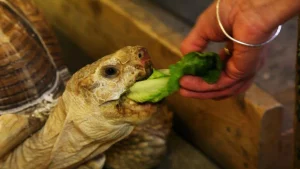
Diet Variations by Turtle Type
Turtles’ diets vary widely depending on their type and where they live. Let’s take a closer look at what different types of turtles like to eat:
Sea Turtles
Sea turtles are mostly found in oceans and have diets that reflect the rich marine environment around them.
- Green Sea Turtle Diet Green sea turtles are unique because they are mainly herbivorous. Unlike most sea turtles, adults eat seaweed and seagrasses that grow in shallow waters. These plants are crucial for their nutrition and help maintain the health of the sea beds.
- Loggerhead Turtle Feeding Habits Loggerhead turtles are carnivorous. They use their strong jaws to crush and eat shellfish, crabs, and jellyfish. Their diet helps them grow big and maintain the energy they need to travel long distances in the ocean.
Freshwater Turtles
Freshwater turtles live in rivers, lakes, and ponds. They have varied diets that can change with the availability of food in their environments.
- Red-eared Slider Food Preferences Red-eared sliders are omnivorous and enjoy a varied diet. They eat aquatic plants, insects, and small fish. Providing a mix of these foods keeps them healthy in the wild and as pets.
- Snapping Turtle Dietary Needs Snapping turtles are known for their powerful bite. They eat just about anything they can catch, including fish, frogs, snakes, and even birds and small mammals that come too close to the water’s edge.
Box Turtles and Tortoises
Land-dwelling turtles such as box turtles and tortoises have diets that depend heavily on their local environment’s flora.
- Eastern Box Turtle Nutrition Eastern box turtles are omnivorous. In the wild, they eat a balanced diet of fruits, vegetables, worms, and insects. This variety helps them get the nutrients they need to thrive.
- Desert Tortoise Foraging Behavior Desert tortoises are herbivorous and adapted to their arid environment. They primarily feed on grasses, herbs, and cacti. These plants not only provide them with water but also the nutrition needed to sustain their energy in the hot desert.
Seasonal Changes in Turtle Diets
Turtles change what they eat with the seasons, depending on what food is around and what their bodies need during the year.
Spring and Summer Feeding Patterns
In spring and summer, turtles are very active and there’s lots of food. They eat a lot during these warm months to get energy for growing and making baby turtles. Water turtles enjoy fish and plants in their ponds, while land turtles like munching on fresh greens and fruits.
Fall Foraging and Pre-Hibernation Eating
When fall comes, turtles get ready for the cold months. They eat extra food to store fat that will help them survive while they sleep through the winter. They look for any leftover fruits and veggies or small animals that are still around.
Winter Diet Adjustments
In winter, many turtles sleep and don’t need much food. But those that stay awake eat whatever they can find, like plants that are under the ice or hidden in the ground.
Feeding Pet Turtles
It’s important to feed pet turtles the right way to keep them healthy. Here’s what they need:
Commercial Turtle Food Options
You can find special turtle food in stores, like pellets or sticks, that has all the vitamins and minerals turtles need.
Fresh Food Supplements
Besides store-bought food, it’s good to give turtles fresh things to eat like leafy greens, carrots, and fruits. If you have a meat-eating turtle, you can give it worms or small pieces of cooked fish.
Balancing Nutrition for Captive Turtles
It’s important to give pet turtles different kinds of food that they would find in the wild. This includes a mix of proteins, fats, and fiber. They also need vitamins and minerals, especially calcium, to keep their shells strong and their bodies healthy.
Feeding Schedules and Portion Control
Set a regular time for feeding your turtle and give it only as much food as it needs. Young turtles might need to eat every day, but older ones might only need food every other day or less. This helps them stay fit and not get too fat, which can make them sick.
Common Feeding Mistakes to Avoid
Feeding turtles might seem simple, but there are some common mistakes that can affect their health. Let’s look at what to avoid:
Overfeeding and Obesity in Turtles
One of the biggest mistakes is giving turtles too much food. This can make them overweight, which is bad for their health. Just like in people, obesity in turtles can lead to many health problems and make it hard for them to move around.
Nutritional Deficiencies
Not giving turtles the right kinds of food can lead to missing important nutrients. For example, if a turtle doesn’t get enough calcium, its shell can get weak and not grow right. That’s why it’s important to offer a balanced diet that meets all their needs.
Inappropriate Food Items
Giving turtles food that isn’t right for them can be harmful. Foods like chocolate, dairy products, or anything salty should never be given to turtles. These can make them very sick.
Feeding Frequency Errors
Feeding turtles too often or not often enough can also cause problems. Young turtles need to eat more frequently than adults, who might only need food a few times a week. It’s important to learn how much and how often to feed your turtle based on its age and type.
The Role of Diet in Turtle Health
A good diet is crucial for keeping turtles healthy and happy. Here’s why it matters:
Shell Development and Growth
A turtle’s shell is a big part of its body and needs the right nutrients to grow strong. Calcium and vitamin D are especially important for shell health.
Immune System Support
Just like us, turtles need a strong immune system to fight off sickness. Eating a variety of healthy foods helps keep their immune system strong.
Reproductive Health
For turtles that will have babies, a good diet helps make sure they are healthy enough to reproduce. Nutrient-rich foods support the health of both mother turtles and their eggs.
Longevity and Overall Well-being
Eating well helps turtles live longer and happier lives. A balanced diet reduces the chances of many health issues and helps turtles enjoy their days whether they are swimming or basking in the sun.
Read more: What Do Mud Turtles Eat?
Interesting Turtle Feeding Behaviors
Turtles have unique ways of finding and eating their food depending on their type and diet. Let’s look at some cool behaviors:
Hunting Techniques of Predatory Turtles
Predatory turtles, like snapping turtles, have clever hunting tricks. They often stay still and wait for a fish to swim by, then snap it up quickly with their strong jaws. Some turtles can even trick fish by having a part of their tongue that wiggles like a worm!
Grazing Patterns of Herbivorous Species
Herbivorous turtles, such as the green sea turtle, spend a lot of time eating plants in the water. They slowly move around and munch on seagrass and algae. This helps keep the underwater plants healthy and not too overgrown.
Scavenging Behaviors in Omnivorous Turtles
Omnivorous turtles eat both plants and animals. They often eat whatever they find, like fallen fruits, berries, or even dead fish. Being able to eat many different things helps them survive in various places.
Conservation and Feeding in the Wild
The environment affects how wild turtles find their food, and changes to their homes can make it hard for them to eat.
Impact of Habitat Loss on Food Sources
When turtles lose their homes because of things like building or pollution, they also lose places to find food. Keeping their homes safe is important for keeping turtles healthy.
Climate Change Effects on Turtle Diets
Climate change can change the places where turtles live, which can affect what kind of food is there. For example, if the ocean gets too warm, it can hurt the grass beds where green sea turtles eat, making it hard for them to find food.
Supporting Natural Feeding Habitats
Helping turtles by protecting their homes is a big deal. This means keeping beaches and oceans clean and supporting laws that help turtles. Everyone can help by cleaning up local waters and supporting groups that help wildlife.
Read more: What Do Musk Turtles Eat?
Conclusion
When we learn about What Do Turtles Eat, we discover so much about these amazing creatures and how important it is to take care of them. Turtles have different ways of finding food, depending on what type they are. Some wait for fish to swim by, others graze on plants in the water, and some even eat a mix of plants and animals.
Here at Theturtles.info, we’ve talked about how the seasons change what turtles can eat, how losing their homes affects their food, and how changes in the weather can make it hard for them to find their usual meals. It’s really important to protect where turtles live and to support good practices that keep their homes safe.
Each type of turtle needs certain foods to stay healthy and live a long time. By understanding and respecting what turtles need to eat, we can help keep these wonderful animals around for many years to come.
For more cool facts and helpful tips about turtles, check out our website, Theturtles.info. Together, we can help turtles everywhere have better lives!
FAQs About What Do Turtles Eat
What do turtles usually eat?
Turtles can be herbivores, carnivores, or omnivores, based on their type. Herbivores munch on plants, carnivores feast on meat, and omnivores enjoy both. Common foods include algae, aquatic plants, fruits, insects, worms, and small fish.
Can turtles eat human food?
It’s not ideal to feed turtles human food. They need a diet suited to their natural habitat and species. Foods like bread, processed meats, or dairy products can harm turtles and should be avoided.
How often should I feed my pet turtle?
Young turtles usually need to eat daily. Adult turtles can be fed every other day or a few times a week, depending on their health and species. Always ensure the portion sizes are appropriate to avoid overfeeding.
Do turtles eat the same food in the wild as in captivity?
In the wild, turtles eat whatever is available in their environment, but in captivity, their diet should mimic natural foods as closely as possible. This includes a mix of vegetables, proteins, and supplements depending on the specific needs of the species.
Can turtles eat fruits and vegetables?
Yes, many turtles can eat fruits and vegetables. These can be an important part of their diet, especially for herbivorous and omnivorous turtles. Common choices include carrots, squash, berries, and leafy greens.
What is a common mistake people make when feeding turtles?
A common mistake is overfeeding or providing the wrong types of food, leading to obesity and nutritional deficiencies. It’s important to research what specific types of food and how much of it your turtle species requires.
Why is calcium important in a turtle’s diet?
Calcium is crucial for shell and bone development in turtles. A lack of calcium can lead to shell deformities and other health issues. Turtles often need calcium supplements, especially if they are kept indoors without natural sunlight.
How can I tell if my turtle is not eating properly?
Signs that a turtle isn’t eating properly can include lethargy, weight loss, swollen eyes, or a soft shell. If you notice these signs, it’s important to consult a veterinarian who specializes in reptiles.
